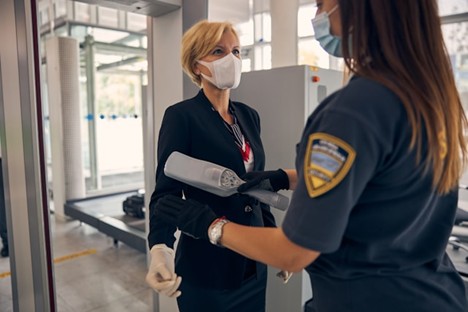
Healthcare facilities are unique environments where safety must be prioritized at all times. Patients often arrive in vulnerable conditions, staff members operate under constant pressure, and visitors come from all walks of life. The combination of medical emergencies, sensitive information, and valuable equipment creates an environment that requires thoughtful protection measures. In some cases, facilities may even employ an armed security guard as part of a broader strategy to ensure peace of mind. However, security in healthcare goes far beyond physical protection, it involves layered systems, protocols, and training designed to safeguard both people and property.
Hospitals, clinics, and specialized care centers are not just places of healing; they are also critical hubs of community trust. Maintaining safety in these environments means protecting against a wide range of risks. These risks can include physical violence, theft, unauthorized access to restricted areas, cybersecurity breaches, and even natural disasters.
When safety protocols are effective, healthcare workers can focus on delivering care without fear of harm or distraction. Likewise, patients and their families feel more at ease knowing their well-being is supported not only by medical expertise but also by a safe environment.
Physical security is one of the most visible aspects of patient and staff protection. Facilities employ a combination of design, technology, and personnel to reduce risks.
Controlled Access Points: Entry and exit doors are often monitored, requiring key cards, badges, or check-in procedures to reduce unauthorized access. Sensitive areas like operating rooms, pharmacies, and data centers typically have stricter access controls.
Surveillance Systems: Modern hospitals rely on high-definition surveillance cameras positioned throughout hallways, entrances, and parking structures. These systems serve both as deterrents and as valuable tools for investigating incidents.
Emergency Call Systems: Panic buttons and emergency communication systems provide staff with immediate access to help when they sense danger. Quick responses can de-escalate potentially harmful situations.
Visitor Management: Registration desks, wristbands, and visitor badges ensure that only authorized individuals enter patient areas. This helps prevent theft, trespassing, and unmonitored movement through sensitive spaces.
One of the most pressing issues healthcare facilities face is workplace violence. Nurses, doctors, and administrative staff can encounter aggressive patients, stressed families, or individuals struggling with behavioral health conditions.
To address this risk, many facilities:
Beyond physical protection, patient confidentiality is another core element of healthcare safety. Unauthorized access to health records can lead to identity theft, fraud, and loss of trust.
Healthcare facilities use:
Protecting data is just as critical as protecting patients themselves. A breach of trust in this area can damage reputations and expose institutions to legal consequences.
In healthcare environments, safety isn’t just about preventing violence or theft—it also means protecting people from the invisible threat of infection. Effective infection control measures protect both staff and patients, especially in times of public health crises.
Measures include:
By minimizing the spread of disease, hospitals safeguard both short-term outcomes and long-term public trust.
Healthcare facilities must be ready for unexpected emergencies ranging from natural disasters to power outages. Preparation ensures continuity of care even under extreme conditions.
Key components include:
Disaster response teams trained for natural disasters, chemical exposures, or mass-casualty events. Backup power systems to keep life-saving equipment running. Evacuation and lockdown protocols to protect patients and staff when external threats occur.
This preparedness creates resilience and allows hospitals to remain operational even when the broader community faces crises.
Even the best security systems are only as strong as the people implementing them. Continuous training ensures staff members are confident and capable when facing challenges.
Facilities often provide:
Supporting staff well-being is not only good for employee retention but also essential to patient care.

A truly safe healthcare facility is one where security measures are woven into the culture of the organization. This involves leadership commitment, employee participation, and transparent communication.
Leaders must set the tone by prioritizing safety in every decision, from budget allocations to daily operations. Staff must feel empowered to report concerns without fear of retaliation. Patients, too, benefit when they are informed about safety protocols and know what to expect during their stay.
As healthcare facilities become more technologically advanced, new challenges arise. Cybersecurity threats, such as ransomware attacks on hospital systems, are growing. Additionally, as outpatient centers and telehealth expand, security considerations extend beyond traditional brick-and-mortar hospitals.
Future healthcare safety strategies will likely involve more integration of digital monitoring tools, predictive analytics, and AI to detect threats before they escalate. At the same time, human presence and compassion will remain vital to creating environments of trust and care.
Protecting staff and patients in healthcare facilities requires a layered, holistic approach. Physical security, workplace violence prevention, data protection, infection control, emergency preparedness, and staff training all work together to create safe, reliable environments.
While measures like surveillance, controlled access, and trained personnel play visible roles, true safety comes from the culture of vigilance and care embedded in every part of an organization. By combining cutting-edge technology with compassionate practices, healthcare facilities can ensure that patients receive not only quality treatment but also peace of mind knowing they are in a secure environment.